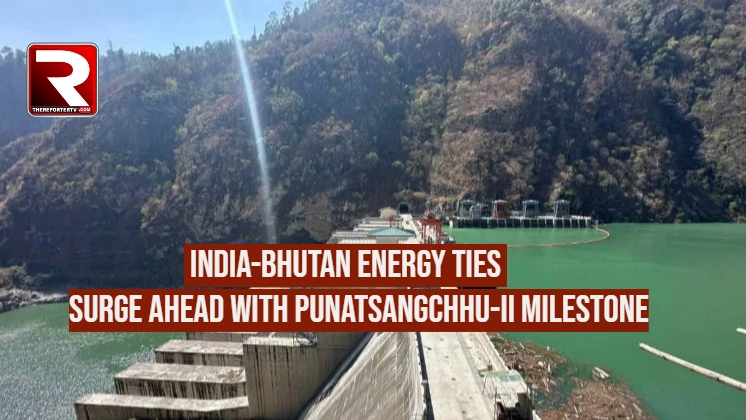New Delhi — In a landmark step forward for regional energy cooperation, the fifth of six generating units at the 1020 MW Punatsangchhu-II hydropower project in Bhutan was successfully synchronised with the national grid on July 17. The milestone brings the joint Indo-Bhutanese venture to the brink of full commissioning, with the final unit expected to be operational by August—potentially coinciding with India’s Independence Day.
According to Bhutan’s national daily Kuensel, the synchronisation of Unit-5 has injected an additional 170 MW into Bhutan’s power grid, taking the total contribution from the project to a significant level. Once fully operational, the project will serve as a testament to the strategic, economic, and environmental importance of cross-border collaboration in South Asia.
Joint Ceremony Marks Progress
A ceremony commemorating the event was held at the project’s powerhouse in Wangdue Phodrang. Attendees included Bhutan’s Minister of Energy and Natural Resources Lyonpo Gem Tshering, Indian Ambassador to Bhutan Sudhakar Dalela, PHPA-II Managing Director Prakash Chand Upadhyaya, and officials from both governments.
“The successful synchronisation of Unit 5 is a testament to the strong and time-tested partnership between India and Bhutan,” the Indian Embassy in Thimphu said in a press release, noting that both countries have a history of close cooperation in hydropower.
A Joint Venture with Deep Roots
The Punatsangchhu-II project is a run-of-the-river hydroelectric facility developed by the Punatsangchhu-II Hydroelectric Project Authority (PHPA-II) under an inter-governmental agreement. The project was initially approved at a base cost of ₹37,778 million (March 2009 price level), with funding provided entirely by the Government of India—30% as a grant and 70% as a soft loan at 10% annual interest.
The physical completion of the project stands at 99.19%, with previous generating units commissioned in December 2024 (Units 1 & 2), March 2025 (Unit 3), and May 2025 (Unit 4). The combined output from these units since December has already generated 1.3 billion units of electricity, translating into a revenue of Nu 4.9 billion (approximately ₹4.9 billion).
Decade-Long Construction Journey
Work on Punatsangchhu-II began in December 2010, with an initial completion target of seven years. However, the timeline was repeatedly pushed back due to a mix of geological issues (including a significant shear zone), flash floods, and pandemic-related disruptions. The final commissioning is now expected in August 2025.
Despite these setbacks, the project’s progress is a significant achievement, particularly considering the difficult Himalayan terrain and the environmental sensitivities of the region.
Broader Strategic Implications
Former Indian Ambassador to Bhutan V.P. Haran told ETV Bharat that Punatsangchhu-II represents a sustainable approach to regional development. “It’s a run-of-the-river project with minimal displacement and environmental disruption,” he noted, adding that India has consistently purchased Bhutan’s surplus electricity under longstanding cooperation frameworks.
India and Bhutan have so far collaborated on four other major hydroelectric projects—Chukha (336 MW), Kurichhu (60 MW), Tala (1020 MW), and Mangdechhu (720 MW). The latter was commissioned in 2019 and formally handed over to Bhutan in December 2022. Alongside Punatsangchhu-II, the 1200 MW Punatsangchhu-I project is also under development.
Geopolitical and Environmental Significance
The India-Bhutan hydropower model is increasingly viewed as a blueprint for regional cooperation that balances energy needs with environmental stewardship. As countries across the globe transition to renewable energy, the Punatsangchhu-II project underscores how shared natural resources can serve as engines for mutual growth and climate resilience.
With the full commissioning of the Punatsangchhu-II project just weeks away, both nations are poised to celebrate not only a technical achievement but a deeper reaffirmation of their enduring friendship and cooperative vision for the region.












